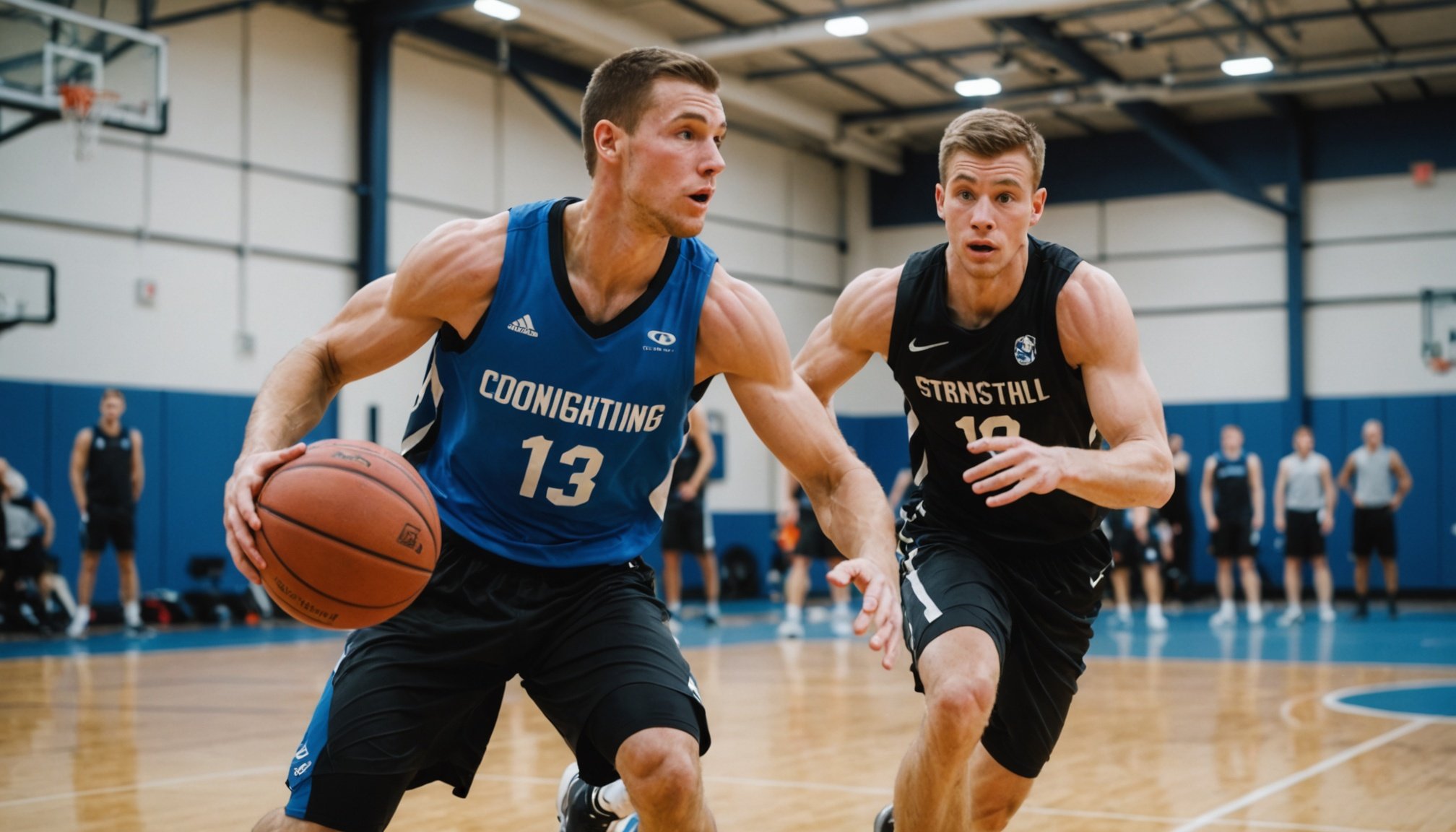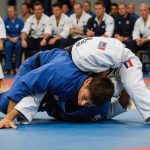Maximizing Performance Potential: The Essential Role of Strength and Conditioning in Training UK Basketball Athletes
Understanding the Importance of Strength and Conditioning
When it comes to optimizing the performance of UK basketball athletes, strength and conditioning play a pivotal role. These components are not just supplementary to the sport; they are fundamental to enhancing athletic performance, reducing the risk of injury, and ensuring long-term success.
Strength and conditioning are interconnected yet distinct aspects of athletic training. Strength training focuses on building muscular power and endurance, while conditioning encompasses a broader range of physical attributes including speed, agility, and cardiovascular fitness. For basketball players, a well-structured strength and conditioning program can be the difference between a good season and a great one.
Additional reading : Elevate your vertical leap: the ultimate strength training blueprint for basketball athletes in the uk
The Science Behind Strength Conditioning
The science behind strength conditioning is rooted in evidence-based research and continuous education. Organizations like the National Strength and Conditioning Association (NSCA) and the UK Strength and Conditioning Association (UKSCA) provide invaluable resources and certifications for coaches and trainers to stay updated on the latest methodologies and research findings[2][3].
For instance, a systematic review published in a reputable sports medicine journal might highlight the effects of different strength training protocols on athletic performance. Such studies often emphasize the importance of periodized training, where the intensity and volume of workouts are varied over time to avoid plateaus and prevent overtraining.
Have you seen this : Maximize your game: the ultimate heart rate monitor guide for uk basketball players to boost training efficiency
Specific Training for Basketball Athletes
Basketball is a high-intensity sport that demands a unique blend of strength, speed, agility, and endurance. Here are some specific training elements that coaches and trainers should focus on:
Strength Training
- Lower Body Strength: Exercises like squats, deadlifts, and lunges are crucial for building the strength needed for jumping and quick changes of direction.
- Upper Body Strength: Push-ups, pull-ups, and dumbbell rows help improve shooting and rebounding capabilities.
- Core Strength: Planks, Russian twists, and leg raises enhance stability and overall athletic performance.
Conditioning
- Speed and Agility: Drills such as shuttle runs, cone drills, and ladder exercises improve speed and agility.
- Endurance: High-Intensity Interval Training (HIIT) and cardiovascular exercises like running or cycling enhance stamina.
- Plyometrics: Jump squats and box jumps improve explosive power.
Example Training Program
Here is a sample weekly training program for a basketball athlete, incorporating both strength and conditioning elements:
| Day | Morning Session | Afternoon Session |
|---|---|---|
| Monday | Lower Body Strength (Squats, Lunges) | Speed and Agility Drills |
| Tuesday | Upper Body Strength (Push-ups, Pull-ups) | Endurance Training (HIIT) |
| Wednesday | Rest Day | Active Recovery (Light Cardio) |
| Thursday | Core Strength (Planks, Russian Twists) | Plyometric Training (Jump Squats) |
| Friday | Full Body Strength (Deadlifts, Bench Press) | Agility Drills (Cone Drills) |
| Saturday | Conditioning (Cardiovascular Exercise) | Rest Day |
| Sunday | Active Recovery (Yoga or Light Stretching) | Rest Day |
Reducing Injury Risk
Injury prevention is a critical aspect of any strength and conditioning program. Here are some strategies to minimize the risk of injury:
- Proper Warm-Up and Cool-Down: Ensuring athletes warm up adequately before training and cool down afterwards can significantly reduce the risk of muscle strains and other injuries.
- Injury-Specific Training: Incorporating exercises that target common injury-prone areas, such as the knees and ankles, can help strengthen these areas and prevent injuries.
- Periodized Training: Avoiding overtraining by varying the intensity and volume of workouts can help prevent overuse injuries.
The Role of Coaches and Trainers
Coaches and trainers play a vital role in designing and implementing effective strength and conditioning programs. Here are some key responsibilities:
- Assessment and Goal Setting: Conducting thorough assessments to identify athletes’ strengths and weaknesses, and setting specific, measurable goals.
- Customized Training Plans: Creating personalized training plans that cater to each athlete’s needs and goals.
- Continuous Monitoring and Feedback: Regularly monitoring athletes’ progress and providing constructive feedback to ensure they are on track to meet their goals.
Real-Life Success Stories
Athletic Lab, a renowned sports performance and fitness training center, provides a compelling example of how tailored strength and conditioning programs can transform athletes. One athlete, who was a Riverdance performer, worked with trainer Beatriz Fernandez to improve his stamina, strength, and overall performance. Through a customized cross-training program that included strength training, mobility exercises, and endurance classes, he was able to significantly enhance his performance and place 7th in his age group in the Southern Region USA + Mexico competition[1].
Practical Insights and Actionable Advice
For coaches, trainers, and athletes looking to maximize performance potential, here are some practical insights and actionable advice:
Focus on Functional Strength
- Incorporate exercises that mimic the movements and actions of the sport. For basketball, this includes squats, lunges, and plyometric exercises.
Incorporate Dynamic Strength Training
- Dynamic strength training, such as weightlifting and resistance band exercises, can improve power and speed.
Use Technology and Data
- Utilize sports science technology to assess biomechanical, performance, and health metrics. This can help in tailoring the training program to the athlete’s specific needs.
Prioritize Recovery
- Adequate recovery is as important as the training itself. Ensure athletes get enough rest, nutrition, and engage in active recovery techniques like yoga or light stretching.
Maximizing the performance potential of UK basketball athletes requires a comprehensive and well-structured strength and conditioning program. By understanding the science behind strength conditioning, incorporating specific training elements, reducing injury risk, and leveraging the expertise of coaches and trainers, athletes can achieve significant improvements in their physical performance and overall success in the sport.
As Dr. Mike Young, a world-renowned coach and sport scientist from Athletic Lab, emphasizes, “A well-designed strength and conditioning program is not just about getting stronger; it’s about enhancing athletic performance, reducing injury risk, and ensuring long-term success”[1].
By adopting a holistic approach to training that includes strength, conditioning, and recovery, UK basketball athletes can reach new heights and achieve their full potential.











